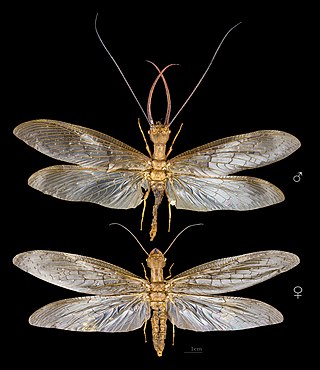
Corydalus is a genus of large flying insects in the Corydalidae family, commonly known as dobsonflies. They are endemic to North, Central and South America and there are about 35 known species. Members of the genus have wing lengths of up to 85 millimetres. They are sexually dimorphic, with the males having large mandibles used to grasp the females during mating while the females have smaller jaws. The larvae are known as hellgrammites and are aquatic predators.
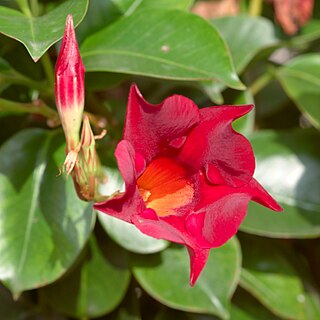
Mandevilla is a genus of tropical and subtropical flowering vines belonging to the family Apocynaceae. It was first described as a genus in 1840. A common name is rocktrumpet.

Pouteria is a genus of flowering trees in the gutta-percha family, Sapotaceae. The genus is widespread throughout the tropical Americas, with outlier species in Cameroon and Malesia. It includes the canistel, the mamey sapote, and the lucuma. Commonly, this genus is known as pouteria trees, or in some cases, eggfruits.

Micrathena, known as spiny orbweavers, is a genus of orb-weaver spiders first described by Carl Jakob Sundevall in 1833. Micrathena contains more than a hundred species, most of them Neotropical woodland-dwelling species. The name is derived from the Greek "micro", meaning "small", and the goddess Athena.
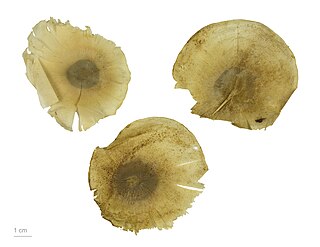
Aspidosperma is a genus of flowering plant in the family Apocynaceae, first described as a genus in 1824. It is native to South America, Central America, southern Mexico, and the West Indies.

Aegiphila is a genus of flowering plants in the mint family, Lamiaceae, first described in 1763. It was formerly classified in the Verbenaceae. It is native to Mexico, Central America, South America, the West Indies, and Florida.

The following outline is provided as an overview of and topical guide to South America.
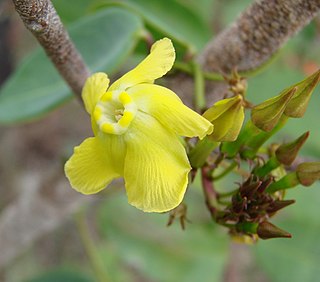
Prestonia is a genus of plants in the family Apocynaceae, first described as a genus in 1810. It is native to Mexico, Central America, South America, and the West Indies. It is closely related to Artia and Parsonsia.

Ctenostoma is a genus in the beetle family Cicindelidae. There are more than 120 described species in the genus Ctenostoma.
Acutandra is a genus of Long-Horned Beetles in the beetle family Cerambycidae. There are more than 20 described species in Acutandra. They are found in Africa and the Neotropics

Birandra is a genus of Long-Horned Beetles in the beetle family Cerambycidae. There are about 14 described species in Birandra.

Coleoxestia is a genus of Long-Horned Beetles in the beetle family Cerambycidae. There are more than 50 described species in Coleoxestia, found mainly in Central and South America.

Criodion is a genus of Long-Horned Beetles in the beetle family Cerambycidae. There are about 11 described species in Criodion.
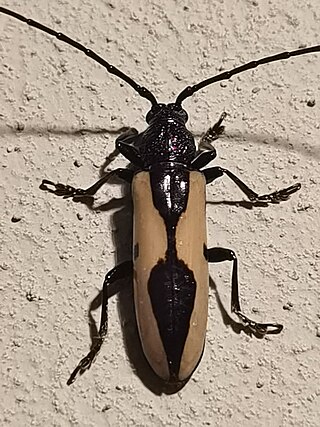
Poeciloxestia is a genus of longhorn beetles in the family Cerambycidae. There are more than 20 described species in Poeciloxestia, found in Central and South America.

Oreodera is a genus of long-horned beetles in the family Cerambycidae. Oreodera is in the subfamily Lamiinae, the flat-faced longhorns. There are more than 100 described species in Oreodera, found in Central and South America.

Melanis is a genus in the butterfly family Riodinidae present in the Neotropical realm.

Alpaida is a genus of South American orb-weaver spiders first described by Octavius Pickard-Cambridge in 1889.

Hamaederus is a genus in the longhorn beetle family Cerambycidae. There are about 16 described species in Hamaederus, found in Mexico, Central America, and South America. Most of these species were formerly members of the genus Plocaederus.


















